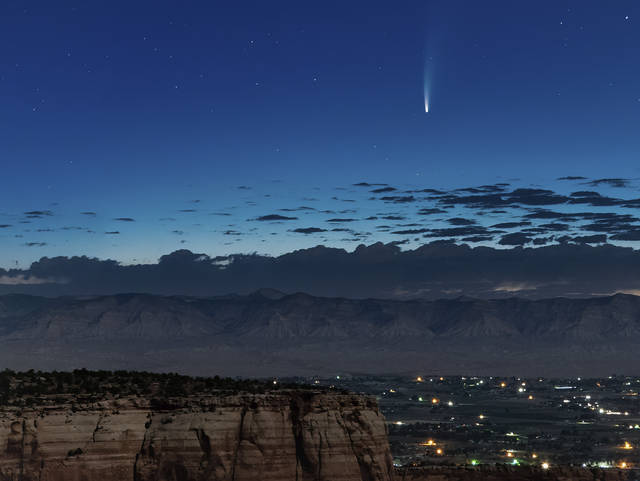How to see comet NEOWISE in Pittsburgh area
It’s a sight you won’t get a chance to see again.
Not unless you live another 6,800 years.
It’s the ball of ice, rock and dust that everyone is talking about: a fuzzy-looking star with a tail otherwise known as comet NEOWISE.
To see it, start to look below the Big Dipper just before sunset.
The peak of its visibility is forecast for Thursday, July 23.
Named for the NASA space telescope (Near-Earth Object Wide-field Infrared Survey Explorer) that discovered it on March 27, comet NEOWISE is putting on a dazzling display for skywatchers before it disappears.
But don’t get too excited over the excellent images of the comet often seen in the media, according to Terry Trees of New Kensington. Trees is past president of the Amateur Astronomers Association, headquartered at the Wagman Observatory in Deer Lakes Park.
“The comet will not appear as nice as they depict it,” Trees said. “Binoculars showed me the comet’s nucleus, coma and tail when I saw it last week, but certainly not all the details in the photos.”
While the comet can be seen by the naked eye, people will need binoculars, 7x50mm or 10x50 mm, or other powerful optics for a good view, he said.
“It needs to be observed in the early evening while the sky is still fairly bright,” Trees said.
Viewing will improve this week as it moves higher in the sky, he said.
Trees offers this advice for stargazers trying to catch more than a glimpse of the comet: Find a location where the northwest has a flat, low horizon. Go out at about 8:30 p.m. and watch where the sun sets to more easily find the Big Dipper, which will be higher above the horizon later in the evening.
Use the finder chart offered by NASA for comet NEOWISE on the NASA website.
For additional information, read the article on comet NEOWISE in Sky and Telescope.
Remove the ads from your TribLIVE reading experience but still support the journalists who create the content with TribLIVE Ad-Free.

